Basilica
- Category: Definitions
- Hits: 6129

The Latin word basilica, was originally used to describe a Roman public building, usually located in the forum of a Roman town. Public basilicas begin to appear in Hellenistic cities in the 2nd century BC.

The Latin word basilica, was originally used to describe a Roman public building, usually located in the forum of a Roman town. Public basilicas begin to appear in Hellenistic cities in the 2nd century BC.

A sarcophagus is a funeral receptacle for a corpse, most commonly carved or cut from stone. The word "sarcophagus" comes from the Greek meaning "flesh", and phagein meaning "to eat", hence sarkophagus means "flesh-eating"; from the phrase lithos sarkophagus.
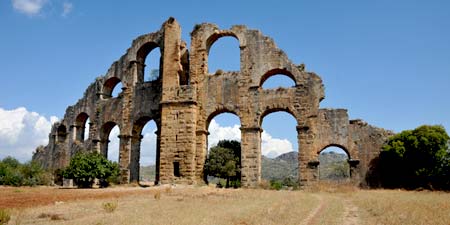
An aqueduct is a water supply or navigable channel (conduit) constructed to convey water. In a more restricted use, aqueduct (occasionally water bridge) applies to any bridge or viaduct that transports water-instead of a path, road or railway-across a gap. Large navigable aqueducts are used as transport links for boats or ships.

In architecture, a crypt is a stone chamber or vault beneath the floor of a church usually used as a chapel or burial vault possibly containing sarcophagi, coffins or relics.

The agora, translatable as marketplace, was a public space and an essential part of an ancient Greek polis or city-state. An agora acted as a marketplace and a forum to the citizens of the polis.
A mausoleum is an external free-standing building constructed as a monument enclosing the interment space or burial chamber of a deceased person or persons. A mausoleum may be considered a type of tomb or the tomb may be considered to be within the mausoleum. A Christian mausoleum sometimes includes a chapel.
A necropolis (plural: necropolises or necropoleis) is a large cemetery or burial place (from Greek nekropolis "city of the dead"). Apart from the occasional application of the word to modern cemeteries outside large towns, the term is chiefly used of burial grounds, often an abandoned city or town, near the sites of the centers of ancient civilizations.
Catacombs are ancient, human-made underground passageways or final resting place of refuges or subterranean cemeteries composed thereof. Many are under cities and have served as a refuge for safety during wars or as a meeting place for cults during historic times.
In architecture, the apse is a semicircular recess covered with a hemispherical vault or semi-dome.
A Dervish or Darvesh is someone treading a Sufi Muslim ascetic path or "Tariqah", known for their extreme poverty and austerity, similar to mendicant friars in Christianity or Hindu/Buddhist/Jain sadhus.
The theatre of ancient Greece, or ancient Greek drama, is a theatrical culture that flourished in ancient Greece between c. 550 and c. 220 BC. The city-state of Athens was its centre, where it was institutionalised as part of a festival called the Dionysia, which honoured the god Dionysus.
The word diazoma originally comes from Greek language meaning belt. When talking about ancient Greek theatre it means the wide path which separated the lines of seats into two or three zones (dress circle, upper circle). In Roman theatre construction the corresponding words “praecinctiones” or “balteus” were used instead.
The Ten Thousand were a group of mercenary units, mainly Greek, drawn up by Cyrus the Younger to attempt to wrest the throne of the Persian Empire from his brother, Artaxerxes II.

Open for Campers! This family-run hotel is located near the E852 main road and about 3 km from the center of Tirana. It offers a restaurant serving Albanian and international dishes. Free Wi-Fi is available here.
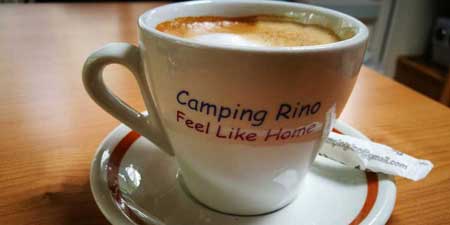
FEEL LIKE HOME! Rino Caravan and Camping Site is a sheltered, small and nice site which is situated in the village of Kalista, near to the border Albania and Macedonia (FYROM).
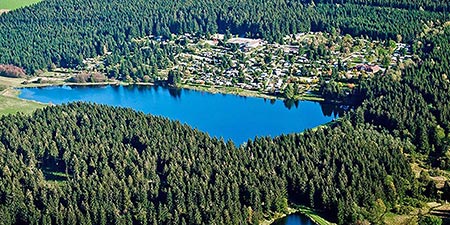
At 600 meters above sea level. N.N. is the Prahljust campsite with its camping area, sauna, holiday rooms and large playground in the middle of nature, far from asphalt and car exhaust fumes, in the hiking and biking paradise of Upper Harz.

Since May 2014, as part of our cultural project "Comprehension and cultural journey along the Roman road system" to promote local cultural heritage in conjunction with booming camper tourism, we have been developing a route concept across the Balkans to the south, which will also lead to a variety of acquaintances and encounters Campers, regardless of whether they are traveling with a caravan, camper van or motorhome.
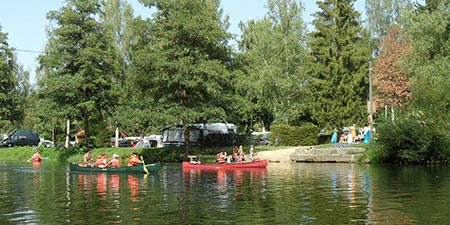
The Naabtal-Pielenhofen campsite was recommended to us as one of the most beautiful places in Eastern Bavaria, as it is located directly on the Naab, framed by meadows and forests.
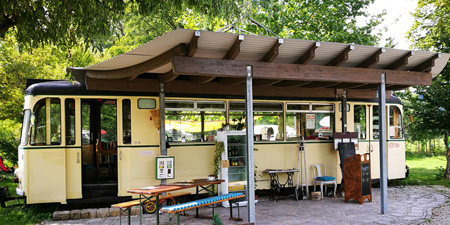
The campground "Unter den Jenzig" at the green belt of Jena is located at the foot of the mountain Jenzig, which makes it an ideal starting point for city sightseeing as well as cycling and hiking along the Saale or up to the Jenzig mountain horse shoe.
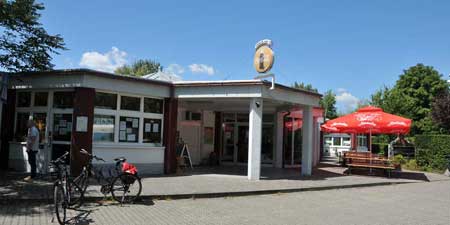
We know exactly how we can make your camping holiday perfect on the basis of our own, already collected worldwide experience by camping bus.